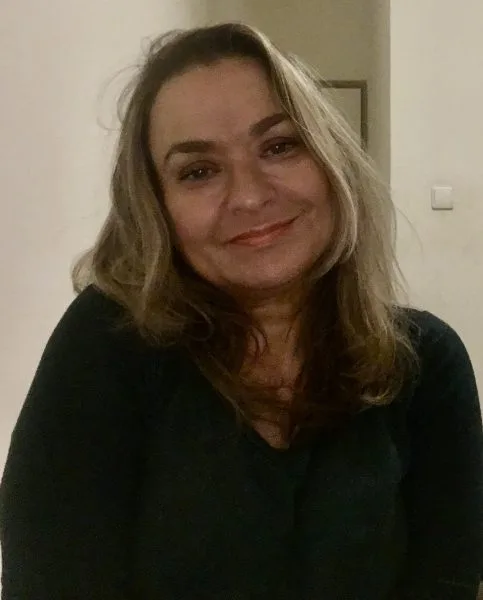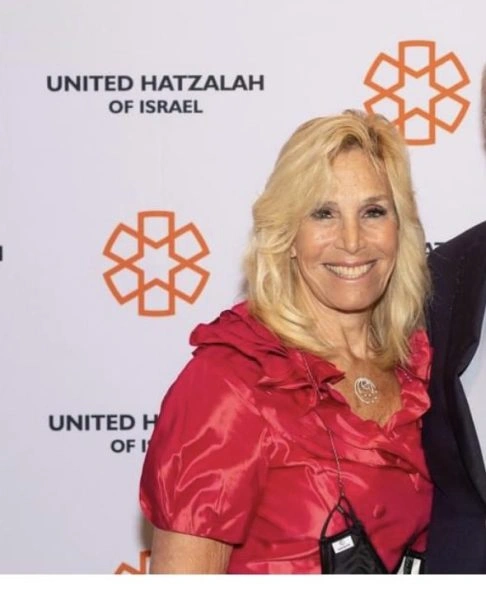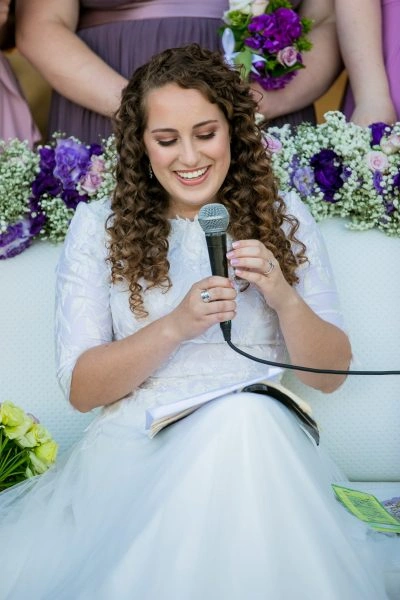Sukkah 36
הָא בְּכוּלַּהּ, הָא בְּמִקְצָתַהּ.
this mishna, where it states that if the etrog was peeled it is unfit, is in a case where all of it was peeled. That statement of Rava that if it was peeled it is fit is in a case where only part of it was peeled.
נִסְדַּק, נִיקַּב. תָּנֵי עוּלָּא בַּר חֲנִינָא: נִיקַּב נֶקֶב מְפוּלָּשׁ — בְּמַשֶּׁהוּ, וְשֶׁאֵינוֹ מְפוּלָּשׁ — בִּכְאִיסָּר.
The mishna continues discussing the halakha of an etrog that was split or pierced. Ulla bar Ḥanina taught: An etrog that was pierced with a hole that completely goes through its body is unfit with any size hole. If the hole does not completely go through the etrog, it is unfit only with a hole the size of an issar coin.
בָּעֵי רָבָא: נוֹלְדוּ בָּאֶתְרוֹג סִימָנֵי טְרֵפָה, מַהוּ? מַאי קָמִיבַּעְיָא לֵיהּ? אִי נִקְלַף — תְּנֵינָא! אִי נִסְדַּק — תְּנֵינָא! אִי נִיקַּב — תְּנֵינָא!
Rava raised a dilemma: If signs of a tereifa developed in the etrog, what is its halakhic status? The Gemara clarifies: What is the dilemma that he is raising? There are similarities between the halakhot of the etrog in the mishna and some of the halakhot of a tereifa, a bird or animal with a condition that will lead to its death within a year. If it is the case where the etrog was peeled, we already learned that case. If it is the case where the etrog was split, we learned that case as well. And if it is the case where the etrog was pierced, we learned that too. After ruling out those defects, the question remains: With regard to what is Rava’s dilemma?
כִּי קָא מִיבַּעְיָא לֵיהּ כִּדְעוּלָּא אָמַר רַבִּי יוֹחָנָן: רֵיאָה שֶׁנִּשְׁפְּכָה כְּקִיתוֹן — כְּשֵׁרָה. וְאָמַר רָבָא: וְהוּא דְּקָיְימִי סִימְפּוֹנַהָא. הָא לָא קָיְימִי סִימְפּוֹנַהָא — טְרֵפָה. הָכָא מַאי? דִּלְמָא הָתָם הוּא דְּלָא שָׁלֵיט בַּהּ אַוֵּירָא, הֲדַר בָּרְיָא, אֲבָל הָכָא דְּשָׁלֵיט בַּהּ אַוֵּירָא — סָרוֹחֵי מַסְרְחָא, אוֹ דִלְמָא לָא שְׁנָא?
The Gemara answers: When he raises the dilemma, it is with regard to a case like that which Ulla said that Rabbi Yoḥanan said: A lung whose contents can be poured like a pitcher, i.e., whose tissue dissolved to the point of liquefaction, is not a sign of tereifa, and the animal is kosher. And Rava said: And that is the halakha only where the bronchia are intact. However, if the bronchia are not intact, it is a sign of tereifa. The dilemma here is with regard to a comparable situation in an etrog, i.e., an etrog that liquefied from within: What is its halakhic status? Perhaps it is there, in the case of the lung, where the air does not affect it since it is completely enclosed in the body, that the lungs can recover, and that is why it is not a tereifa. However, here, in the case of the etrog, where the air affects it, it inevitably decays and spoils and therefore it is a tereifa. Or, perhaps the case of the etrog is no different.
תָּא שְׁמַע: אֶתְרוֹג תָּפוּחַ סָרוּחַ, כָּבוּשׁ, שָׁלוּק, כּוּשִׁי, לָבָן, וּמְנוּמָּר — פָּסוּל. אֶתְרוֹג כְּכַדּוּר — פָּסוּל, וְיֵשׁ אוֹמְרִים: אַף הַתְּיוֹם. אֶתְרוֹג הַבּוֹסֶר — רַבִּי עֲקִיבָא פּוֹסֵל, וַחֲכָמִים מַכְשִׁירִין. גִּדְּלוֹ בִּדְפוּס וַעֲשָׂאוֹ כְּמִין בְּרִיָּה אַחֶרֶת — פָּסוּל.
The Gemara answers: Come and hear a resolution to this dilemma based on that which was taught in a baraita. An etrog that is tafuaḥ, saruaḥ, pickled, boiled, a black Cushite etrog, a white etrog, or a speckled etrog is unfit. An etrog shaped like a ball is unfit, and some say even a twin, conjoined, etrog is unfit. With regard to an etrog that is unripe, Rabbi Akiva deems it unfit, and the Rabbis deem it fit. If he grew the etrog in a mold and shaped it to appear like a different entity, and it is no longer shaped like an etrog, it is unfit.
קָתָנֵי מִיהַת תָּפוּחַ סָרוּחַ, מַאי לָאו: תָּפוּחַ מִבַּחוּץ, וְסָרוּחַ מִבִּפְנִים! לָא, אִידִי וְאִידִי מִבַּחוּץ, וְלָא קַשְׁיָא: הָא דִּתְפַח אַף עַל גַּב דְּלָא סְרַח, הָא דִּסְרַח אַף עַל גַּב דְּלָא תְּפַח.
In any event, it teaches that an etrog that is tafuaḥ or saruaḥ is unfit. What, is it not that tafuaḥ means that it decayed on the outside and saruaḥ means that it decayed on the inside? The Gemara rejects this explanation: No, both this and that are referring to decay on the outside. And this apparent redundancy is not difficult, as this case, tafuaḥ, is where it swelled even though it did not decay, and that case, saruaḥ, is where it decayed even though it did not swell.
אָמַר מָר: אֶתְרוֹג כּוּשִׁי — פָּסוּל. וְהָתַנְיָא: כּוּשִׁי כָּשֵׁר, דּוֹמֶה לְכוּשִׁי — פָּסוּל! אֲמַר אַבָּיֵי: כִּי תְּנַן נָמֵי מַתְנִיתִין, דּוֹמֶה לְכוּשִׁי תְּנַן. רָבָא אָמַר: לָא קַשְׁיָא הָא לַן, וְהָא לְהוּ.
The Master said in the baraita cited above: A Cushite etrog is unfit. The Gemara asks: But isn’t it taught in a different baraita: A Cushite etrog is fit, but an etrog that is similar to a Cushite etrog is unfit. Abaye said: When we learned this halakha in the mishna that it is unfit, too, we learned it not in reference to an actual Cushite etrog, but rather in reference to one that is similar to a Cushite etrog. Rava said: Actually, the mishna is referring to a Cushite etrog, and nevertheless, it is not difficult; this, the halakha that it is unfit, is for us in Babylonia because our etrogim are typically light, and the dark Cushite etrogim are conspicuously different. And that, the halakha that it is fit, is for them in Eretz Yisrael, whose etrogim are typically dark. In Eretz Yisrael the dark Cushite etrog is not conspicuously different, and it is therefore fit.
אֶתְרוֹג הַבּוֹסֶר — רַבִּי עֲקִיבָא פּוֹסֵל וַחֲכָמִים מַכְשִׁירִין. אָמַר רַבָּה: רַבִּי עֲקִיבָא וְרַבִּי שִׁמְעוֹן אָמְרוּ דָּבָר אֶחָד. רַבִּי עֲקִיבָא — הָא דַּאֲמַרַן. רַבִּי שִׁמְעוֹן מַאי הִיא — (דְּתַנְיָא:) רַבִּי שִׁמְעוֹן פּוֹטֵר אֶת הָאֶתְרוֹגִים בְּקוֹטְנָן.
It was also taught in the baraita: With regard to an unripe etrog, Rabbi Akiva deems it unfit, and the Rabbis deem it fit. Rabba said: Rabbi Akiva and Rabbi Shimon said one and the same statement. The Gemara elaborates: The statement of Rabbi Akiva is that which we said; an unripe etrog is unfit. Rabbi Shimon, what is his statement? It is as it is taught in a baraita: Rabbi Shimon exempts etrogim from the requirement to be tithed while in their small state. Apparently, Rabbi Shimon, too, holds that an unripe etrog is not a fruit.
אֲמַר לֵיהּ אַבָּיֵי: דִּלְמָא לָא הִיא, עַד כָּאן לָא קָאָמַר רַבִּי עֲקִיבָא הָכָא, דְּבָעֵינַן ״הָדָר״ וְלֵיכָּא, אֲבָל הָתָם — כְּרַבָּנַן סְבִירָא לֵיהּ.
Abaye said to Rabba: Perhaps that is not the case and they do not share the same opinion. Rabbi Akiva stated his opinion only here, with regard to an unripe etrog, as we require beauty [hadar] in an etrog and there is none in the case of an unripe etrog due to its color or small size; however, there, with regard to tithes, perhaps he holds in accordance with the opinion of the Rabbis that one is obligated to tithe even a half-ripe etrog.
אִי נָמֵי, עַד כָּאן לָא קָאָמַר רַבִּי שִׁמְעוֹן הָתָם, אֶלָּא דִּכְתִיב: ״עַשֵּׂר תְּעַשֵּׂר אֵת כׇּל תְּבוּאַת זַרְעֶךָ״, כְּדֶרֶךְ שֶׁבְּנֵי אָדָם מוֹצִיאִין לִזְרִיעָה. אֲבָל הָכָא, כְּרַבָּנַן סְבִירָא לֵיהּ.
Alternatively, Rabbi Shimon stated his opinion only there with regard to the exemption of an unripe etrog from tithes, as it is written: “You shall surely tithe all the produce of your planting, which is brought forth in the field year by year” (Deuteronomy 14:22). From that verse it is derived that the obligation to tithe applies only to produce that has developed to the point where it is typical for people to take it out to the field for sowing; one is not obligated to tithe unripe fruit that is not suitable for planting. However, perhaps here he holds in accordance with the opinion of the Rabbis, who disagree with Rabbi Akiva and would deem an unripe etrog fit.
וְתוּ לָא מִידֵּי.
The Gemara notes: And there is nothing more to discuss here. Clearly, the opinions of Rabbi Akiva and Rabbi Shimon do not necessarily coincide.
גִּדְּלוֹ בִּדְפוּס וַעֲשָׂאוֹ כְּמִין בְּרִיָּה אַחֶרֶת — פָּסוּל. אָמַר רָבָא: לֹא שָׁנוּ אֶלָּא כְּמִין בְּרִיָּה אַחֶרֶת, אֲבָל כִּבְרִיָּיתוֹ — כָּשֵׁר. פְּשִׁיטָא! כְּמִין בְּרִיָּה אַחֶרֶת (תְּנַן)! לָא צְרִיכָא, דַּעֲבִידָא דַּפֵּי דַּפֵּי.
The baraita continues: If he grew the etrog in a mold and shaped it to appear like a different species, it is unfit. Rava said: The Sages taught that it is unfit only if he shaped it to appear like a different species; however, if he shaped the etrog so it still appears like its own species, it is fit. The Gemara asks: That is obvious; the phrase: Like a different species, is explicitly taught in the baraita. If it shaped like its own species, it is fit. The Gemara answers: No, Rava’s statement is necessary to deem fit an etrog that is shaped into the shape of many planks, i.e., pieces of wood attached to each other. Although its shape is not precisely that of a regular etrog, it sufficiently resembles a regular etrog and is fit.
אִיתְּמַר אֶתְרוֹג שֶׁנְּקָבוּהוּ עַכְבָּרִים, אָמַר רַב: אֵין זֶה הָדָר. אִינִי? וְהָא רַבִּי חֲנִינָא מְטַבֵּיל בֵּהּ וְנָפֵיק בֵּהּ! וּלְרַבִּי חֲנִינָא קַשְׁיָא מַתְנִיתִין!
§ It was stated that the amora’im disagree with regard to an etrog that mice pierced. Rav said: That is not beautiful. Is that so? But wouldn’t Rabbi Ḥanina dip his etrog, eat part of it, and fulfill his obligation with what remained of it? The Gemara asks: And for Rabbi Ḥanina, the mishna is difficult, as it states that an incomplete etrog is unfit.
בִּשְׁלָמָא מַתְנִיתִין לְרַבִּי חֲנִינָא לָא קַשְׁיָא: כָּאן בְּיוֹם טוֹב רִאשׁוֹן, כָּאן בְּיוֹם טוֹב שֵׁנִי. אֶלָּא לְרַב קַשְׁיָא! אָמַר לְךָ רַב: שָׁאנֵי עַכְבָּרִים דִּמְאִיסִי.
The Gemara explains: Granted, for Rabbi Ḥanina, the mishna is not difficult, as it can be explained that here, when the mishna prohibits one from using an incomplete etrog, it is referring to performing the mitzva on the first day of the festival of Sukkot, when a complete taking of the species is required; and there, when Rabbi Ḥanina’s conduct leads to the conclusion that an incomplete etrog is fit, it is referring to performing the mitzva on the second day of the Festival or thereafter. However, according to Rav, who said an etrog that was pierced by mice is unfit, Rabbi Ḥanina’s conduct is difficult, as the requirement of beauty applies on all seven days. The Gemara answers: This is not difficult, as Rav could have said to you: Mice are different, as they are repulsive. When mice pierce an etrog, what remains is antithetical to beauty. When a person bites an etrog, what remains can still be considered beautiful.
אִיכָּא דְּאָמְרִי, אָמַר רַב: זֶה הָדָר, דְּהָא רַבִּי חֲנִינָא מְטַבֵּיל בֵּהּ וְנָפֵיק בֵּהּ. וּלְרַבִּי חֲנִינָא קַשְׁיָא מַתְנִיתִין! לָא קַשְׁיָא: כָּאן בְּיוֹם טוֹב רִאשׁוֹן, כָּאן בְּיוֹם טוֹב שֵׁנִי.
§ Some say this exchange differently. Rav said with regard to an etrog that mice pierced: That is beautiful, as Rabbi Ḥanina would dip his etrog, eat part of it, and fulfill his obligation with what remained of it, indicating that an incomplete etrog is fit. The Gemara asks: And for Rabbi Ḥanina, the mishna is difficult, as it states that an incomplete etrog is unfit. The Gemara answers: The mishna is not difficult; here, it is referring to performing the mitzva on the first day of the festival of Sukkot; there, it is referring to performing the mitzva on the second day of the Festival or thereafter.
אֶתְרוֹג קָטָן וְכוּ׳. אָמַר רַפְרָם בַּר פָּפָּא: כְּמַחְלוֹקֶת כָּאן, כָּךְ מַחְלוֹקֶת בַּאֲבָנִים מְקוּרְזָלוֹת. דְּתַנְיָא: בְּשַׁבָּת שָׁלֹשׁ אֲבָנִים מְקוּרְזָלוֹת מוּתָּר לְהַכְנִיס לְבֵית הַכִּסֵּא, וְכַמָּה שִׁיעוּרָן? רַבִּי מֵאִיר אוֹמֵר: כֶּאֱגוֹז, רַבִּי יְהוּדָה אוֹמֵר: כְּבֵיצָה.
A dispute between Rabbi Meir and Rabbi Yehuda is cited in a mishna with regard to the minimum measure of a small etrog. Rafram bar Pappa said: Like the dispute here, so is the dispute with regard to the matter of rounded stones, as it was taught in a baraita: On Shabbat three rounded stones may be taken into the bathroom in order to clean oneself with them. Although generally one may not move stones on Shabbat because they are set aside from use, the Sages permitted doing so in the interest of human dignity. However, they disagreed, with regard to the size of these stones. And what is their measure? Rabbi Meir says: A walnut-bulk; Rabbi Yehuda says: An egg-bulk. Clearly the rationales for these disputes are different; however, since the respective measures are identical, the analogy can serve as a mnemonic.
וּבַגָּדוֹל כְּדֵי שֶׁיֹּאחַז כּוּ׳. תַּנְיָא, אָמַר רַבִּי יוֹסֵי: מַעֲשֶׂה בְּרַבִּי עֲקִיבָא שֶׁבָּא לְבֵית הַכְּנֶסֶת וְאֶתְרוֹגוֹ עַל כְּתֵפוֹ! אָמַר לוֹ רַבִּי יְהוּדָה: מִשָּׁם רְאָיָה? אַף הֵם אָמְרוּ לוֹ: אֵין זֶה הָדָר.
The mishna continues: And in a large etrog, the maximum measure is so that one could hold two in his one hand; this is the statement of Rabbi Yehuda. Rabbi Yosei says: It is fit even if it is so large that he can hold only one in his two hands. It is taught in a baraita that Rabbi Yosei said: There was an incident involving Rabbi Akiva, who came to the synagogue, and his etrog was so large that he carried it on his shoulder. Apparently, one can fulfill his obligation with a large etrog. Rabbi Yehuda said to him: Is there proof from there? In that case, too, the Sages said to him: That is not beauty.
מַתְנִי׳ אֵין אוֹגְדִין אֶת הַלּוּלָב אֶלָּא בְּמִינוֹ, דִּבְרֵי רַבִּי יְהוּדָה. רַבִּי מֵאִיר אוֹמֵר: אֲפִילּוּ (בְּחוּט) בִּמְשִׁיחָה. אָמַר רַבִּי מֵאִיר: מַעֲשֶׂה בְּאַנְשֵׁי יְרוּשָׁלַיִם שֶׁהָיוּ אוֹגְדִין אֶת לוּלְבֵיהֶן בְּגִימוֹנִיּוֹת שֶׁל זָהָב. אָמְרוּ לוֹ: בְּמִינוֹ הָיוּ אוֹגְדִין אוֹתוֹ מִלְּמַטָּה.
MISHNA: One may bind the lulav only with its own species; i.e., one of the four species taken with the lulav. This is the statement of Rabbi Yehuda. Rabbi Meir says: One may do so even with a string or with a cord. Rabbi Meir said: There was an incident involving the men of Jerusalem who would bind their lulavim with gold rings. The Sages said to him: They would bind it with its own species beneath the rings, which serve a merely decorative purpose and not a halakhic one.
גְּמָ׳ אָמַר רָבָא: אֲפִילּוּ בְּסִיב, אֲפִילּוּ בְּעִיקָּרָא דְּדִיקְלָא. וְאָמַר רָבָא: מַאי טַעְמֵיהּ דְּרַבִּי יְהוּדָה, קָסָבַר: לוּלָב צָרִיךְ אֶגֶד, וְאִי מַיְיתֵי מִינָא אַחֲרִינָא — הָוֵה חַמְשָׁה מִינֵי.
GEMARA: Rava said: One may bind the lulav even with fibers that grow around the trunk of the date palm, and even with a piece of the trunk of the date palm. And Rava said: What is the rationale for the opinion of Rabbi Yehuda? He holds that a lulav requires binding, and if one brings another species to bind the lulav, there will be five species and he will violate the prohibition against adding to the mitzvot.
וְאָמַר רָבָא: מְנָא אָמֵינָא לַהּ דְּסִיב וְעִיקָּרָא דְּדִיקְלָא מִינָא דְלוּלַבָּא הוּא — דְּתַנְיָא: ״בַּסּוּכּוֹת תֵּשְׁבוּ״, סוּכָּה שֶׁל כׇּל דָּבָר, דִּבְרֵי רַבִּי מֵאִיר. רַבִּי יְהוּדָה אוֹמֵר: אֵין סוּכָּה נוֹהֶגֶת אֶלָּא בְּאַרְבָּעָה מִינִים שֶׁבַּלּוּלָב. וְהַדִּין נוֹתֵן: וּמָה לוּלָב שֶׁאֵין נוֹהֵג בַּלֵּילוֹת כְּבַיָּמִים, אֵינוֹ נוֹהֵג אֶלָּא בְּאַרְבַּעַת מִינִין, סוּכָּה שֶׁנּוֹהֶגֶת בַּלֵּילוֹת כְּבַיָּמִים — אֵינוֹ דִּין שֶׁלֹּא תְּהֵא אֶלָּא בְּאַרְבַּעַת מִינִין!
And Rava further said: From where do I say this halakha that fibers and the trunk of the date palm are the species of the lulav? It is as it is taught in a baraita that it is written: “You shall reside in sukkot for seven days” (Leviticus 23:42), which means a sukka of any material, as the Torah was not particular about the material to be used for the roofing; any species may be used as long as it grew from the ground and it is not susceptible to impurity. This is the statement of Rabbi Meir. Rabbi Yehuda says: The mitzva of sukka is practiced only with the four species of the lulav as roofing. And, he claims, logic dictates that it is so, as it is derived by means of an a fortiori inference: Just as the mitzva of lulav, which is not practiced at night as it is during the day, is practiced only with the four species, with regard to the mitzva of sukka, which is practiced at night as it is during the day, is it not right that its roofing should be only from the four species?
אָמְרוּ לוֹ: כׇּל דִּין שֶׁאַתָּה דָּן תְּחִלָּתוֹ לְהַחְמִיר וְסוֹפוֹ לְהָקֵל — אֵינוֹ דִּין.
The Rabbis said to him: That is not an a fortiori inference, as any a fortiori inference that you infer initially to be stringent, but ultimately it is to be lenient, is not a legitimate a fortiori inference. If ultimately the stringency leads to a leniency, the entire basis of the inference is undermined.






















